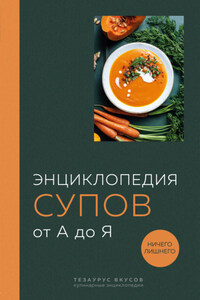The Savvy Shopper column first appeared in the Daily Telegraph’s Weekend section in October 2004. Its aim was to provide a guide not only to feeling good about the food we buy, but to also help find the food that gives the most sensory pleasure – that rare thing, a guiltfree shopping trip. The philosophy was rooted in ethical shopping, and the timing for the first column was perfect. Words and phrases like ‘organic’, ‘Fairtrade’, ‘welfare-friendly’ and ‘food miles’ were on our consciences, but there was no existing detailed guide tying food issues to a shopping directory.
The first Savvy Shopper article featured apples and must have touched a nerve. The letters began to pour in – concerned, intrigued, frustrated and curious. It was obvious that there is an army of discerning food shoppers in this country whose quest is to buy food with peace of mind and a clear conscience but also to enjoy great flavours, aromas and textures. A year and a half later, the column has developed a huge and enthusiastic following and, as so many correspondents admitted to cutting out and keeping the page, it seemed crazy not to collect it all into a book, expanding, updating and adding new suppliers and foods. Shoppers need an at-a-glance guidebook to chuck into the car, bag or pushchair when setting out to shop. And since many of the listed suppliers are also able to offer home delivery, it’s one to keep by the telephone or laptop, too.
But savvy shopping doesn’t just begin and end in your own kitchen – it has a wider influence, too. The food industry (the producers, manufacturers and retailers) has one objective: to please you. Over the eighteen months since the Savvy Shopper was born, the food industry’s bigger businesses have made some remarkable policy changes. One supermarket chain has pledged to source fish more responsibly, another has promised to remove (most) artificial additives from its ready meal range and a potato crisp giant has promised to fry in ‘healthier’ oil. As I write, mission statements are popping up all over the place. Media exposure has a great impact on food issues, it’s true, but the greatest impact on the food industry will come from us – the willing shoppers who want, and increasingly demand, to eat excellent, ethically produced food that tastes good.
Food miles, genetic modification, pesticide residues, vCJD, GM terminator seeds, hydrogenated fats, interesterification, transfats, stalls and tethers, specified risk material, formed meats, cheese food, modified maize starch, hormone disruptors, irradiation, mechanically recovered meats, broiler houses, batteries, FADS, aquaculture, nature identical flavourings, stabilisers, emulsifiers and over 40 colourings, many of them artificial…
A warm welcome to the food industry, and all the wiles and ways it employs to reap the most at the least cost. The words above have a connection to your kitchen. You probably bought something today that relates to at least one of them. We hear phrases like GM and food miles bandied about, but what do they really mean?
Food miles relate to the total distance that each food travels from field or factory to our shops, and the impact they have on our environment depends on the method of transport: sea, road or air freight.
Transporting food is inefficient and depletes our supply of fossil fuels – we use more energy to transport an asparagus spear from Peru than it can give us in calories. Air freight is the least efficient, road is next; sea freight is the most economic in fuel terms.
The food that causes the greatest concern is that which travels the longest distance using the most fuel – so air-freighted Thai basil is more of a problem than sea-freighted frozen New Zealand lamb, especially as it has little nutritional importance in comparison to meat. The frustrating aspect of this for environmentalists is that both these foods can be produced in the UK; there is no real need to import them.














